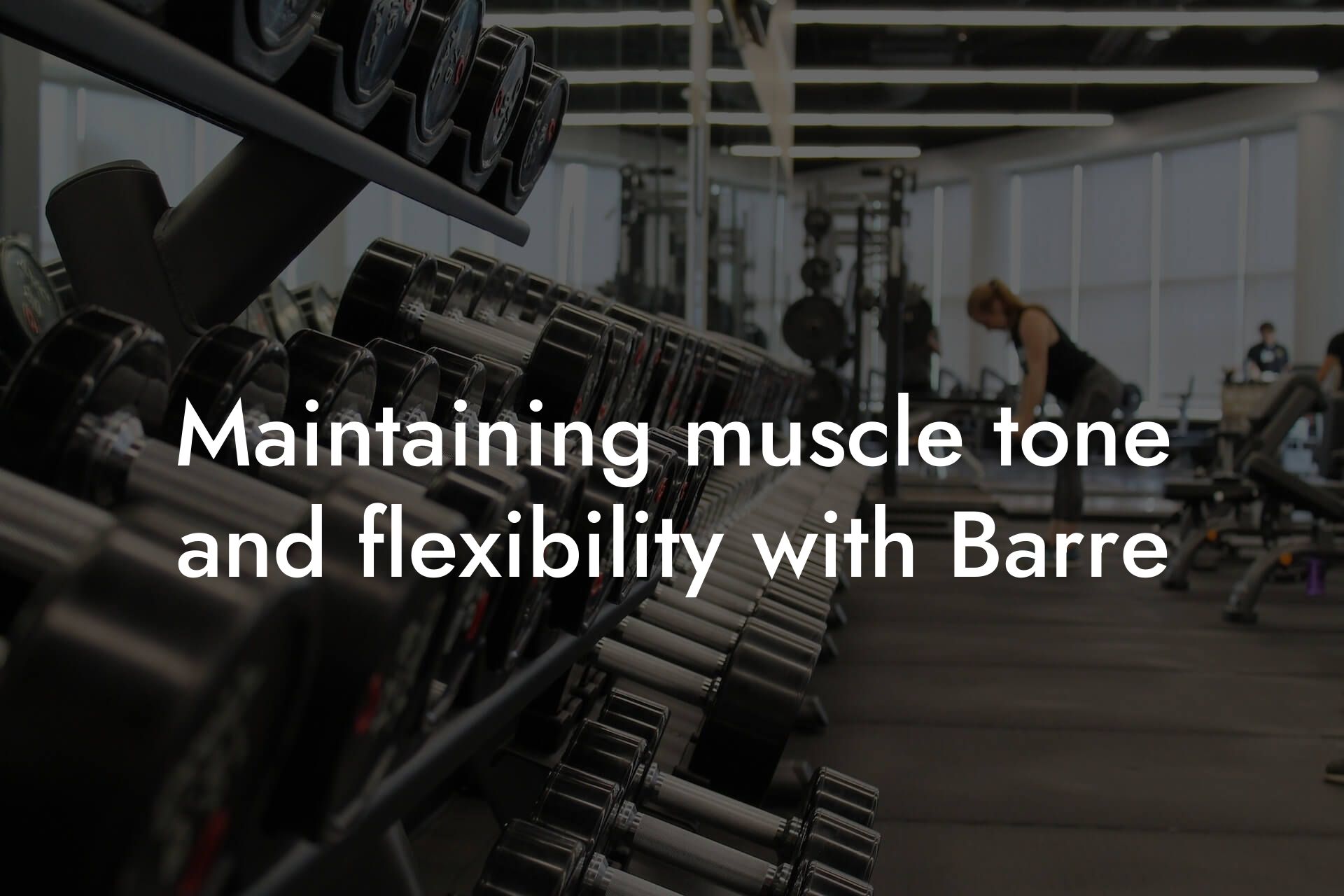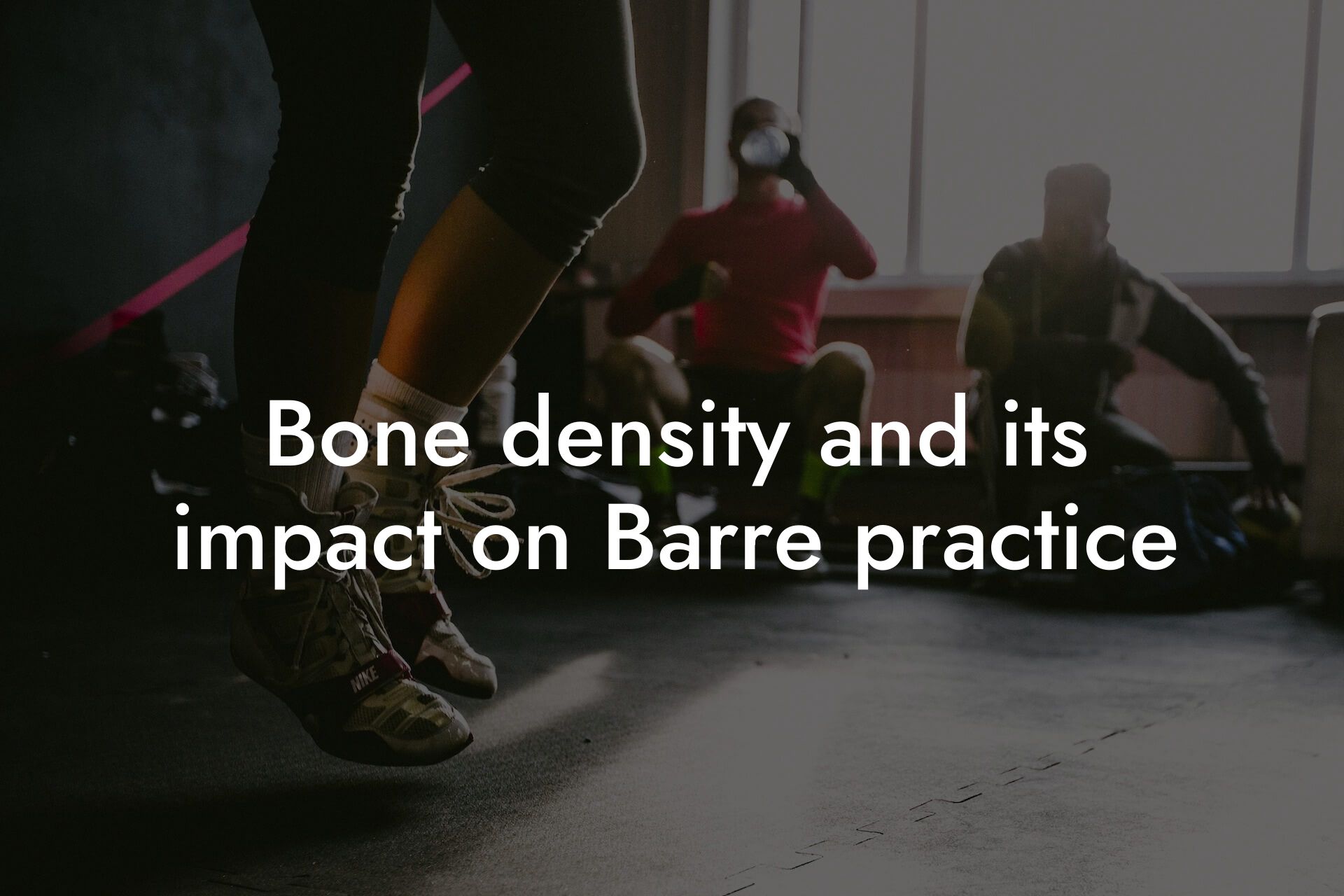What is Barre Training?
Barre training is a form of exercise that combines elements of ballet, Pilates, and yoga to provide a full-body workout. It focuses on low-impact, high-intensity movements that engage the core, improve flexibility, and strengthen the muscles. Barre training is popular among individuals who want to improve their physical appearance, increase their muscle tone, and enhance their overall fitness. However, to achieve optimal results, it's essential to have a clear understanding of your body composition and how it responds to exercise.
Table of Contents
What is a DEXA Scan?
A DEXA (Dual-Energy X-ray Absorptiometry) scan is a non-invasive, pain-free test that measures bone density, body composition, and fat distribution. It uses X-ray beams to produce detailed images of the body, providing accurate data on lean mass, fat mass, and bone mineral density. DEXA scans are commonly used to diagnose osteoporosis, but they also offer valuable insights for individuals looking to optimize their fitness routine, including Barre training.
How Can DEXA Scans Benefit Barre Training?
DEXA scans provide a comprehensive understanding of your body composition, which is essential for creating an effective Barre training program. By analyzing the scan results, you can:
- Identify areas of high body fat percentage, which may require additional attention during exercise.
- Determine your lean mass percentage, which can help you focus on building muscle in specific areas.
- Assess your bone density, which is critical for individuals who engage in high-impact exercises or have a history of osteoporosis.
- Track changes in body composition over time, allowing you to adjust your training program as needed.
Understanding Body Composition for Barre Training
Body composition refers to the proportion of fat mass and lean mass in your body. For Barre training, it's essential to understand the distribution of fat and lean mass to target specific areas and achieve optimal results. DEXA scans provide a detailed breakdown of body composition, including:
- Visceral fat: Excess fat around the organs, which can increase the risk of chronic diseases.
- Subcutaneous fat: Fat just beneath the skin, which can affect appearance and overall health.
- Lean mass: Muscle mass, bone density, and water content, which are essential for strength, flexibility, and overall fitness.
Optimizing Barre Training with DEXA Scan Results
Once you have your DEXA scan results, you can use the data to optimize your Barre training program. For example:
- If you have high visceral fat, you may want to focus on core exercises and high-intensity interval training to reduce fat around the organs.
- If you have low lean mass, you may want to incorporate strength training exercises to build muscle and improve overall fitness.
- If you have low bone density, you may want to focus on weight-bearing exercises and incorporate calcium and vitamin D supplements into your diet.
Creating a Personalized Barre Training Program
With your DEXA scan results, you can work with a fitness professional to create a personalized Barre training program tailored to your specific needs and goals. This program should take into account:
- Your body composition and fat distribution.
- Your fitness level and goals.
- Your schedule and availability.
- Your nutritional habits and lifestyle.
Tracking Progress and Adjusting Your Program
To ensure optimal results, it's essential to track your progress regularly and adjust your Barre training program as needed. DEXA scans can be repeated at regular intervals to monitor changes in body composition, allowing you to:
- Identify areas of improvement.
- Adjust your exercise routine to target specific areas.
- Monitor the effectiveness of your program and make data-driven decisions.
DEXA scans offer a valuable tool for individuals looking to optimize their Barre training program. By providing a comprehensive understanding of body composition, DEXA scans can help you create a personalized fitness program that targets specific areas, improves overall fitness, and enhances your physical appearance. At Tano Performance Group, we offer DEXA scans as part of our comprehensive body assessment, providing high-earning professionals with the data they need to take their fitness to the next level.
Frequently Asked Questions
What is a DEXA scan and how does it relate to Barre training?
A DEXA (Dual-Energy X-ray Absorptiometry) scan is a non-invasive medical test that measures bone density and body composition. In the context of Barre training, DEXA scans can help optimize your workout routine by providing valuable insights into your body fat percentage, lean muscle mass, and bone density. This information can be used to tailor your Barre exercises to focus on areas that need improvement, ensuring a more effective and efficient workout.
What are the benefits of using DEXA scans in Barre training?
By incorporating DEXA scans into your Barre training, you can experience a range of benefits, including improved body composition, increased bone density, and enhanced overall physical performance. DEXA scans can also help identify areas of muscle imbalance, allowing you to target specific exercises to improve your overall strength and flexibility.
How does a DEXA scan work?
A DEXA scan uses low-level X-rays to measure the density of your bones and body composition. During the scan, you'll lie on a flat table while a machine passes over your body, taking precise measurements. The entire process typically takes around 10-15 minutes, and the results are usually available within a few days.
What can I expect during a DEXA scan?
During a DEXA scan, you'll be asked to lie still on a flat table, usually on your back. The machine will then pass over your body, taking measurements of your bone density and body composition. The process is painless and non-invasive, and you'll be able to breathe normally throughout the scan.
How often should I get a DEXA scan?
The frequency of DEXA scans depends on your individual goals and needs. If you're using DEXA scans to optimize your Barre training, you may want to consider getting a scan every 6-12 months to track your progress and make adjustments to your workout routine as needed.
What is body composition, and why is it important in Barre training?
Body composition refers to the percentage of fat and lean mass in your body. In Barre training, understanding your body composition is crucial, as it can help you identify areas where you need to improve, such as increasing lean muscle mass or reducing body fat percentage.
How does Barre training affect bone density?
Barre training can have a positive impact on bone density, particularly in older adults or those with osteoporosis. The low-impact, weight-bearing exercises involved in Barre can help stimulate bone growth and density, reducing the risk of osteoporosis and fractures.
What is the ideal body fat percentage for Barre training?
The ideal body fat percentage for Barre training varies depending on your age, gender, and fitness goals. Generally, a body fat percentage between 18-24% is considered healthy for women, while 10-17% is considered healthy for men. However, this can vary depending on your individual needs and goals.
How can I use DEXA scan results to optimize my Barre training?
By analyzing your DEXA scan results, you can identify areas where you need to improve, such as increasing lean muscle mass or reducing body fat percentage. You can then use this information to tailor your Barre exercises, focusing on specific areas of the body that need improvement.
Can DEXA scans help with injury prevention in Barre training?
Yes, DEXA scans can help with injury prevention in Barre training by identifying areas of muscle imbalance or weakness. By addressing these imbalances through targeted exercises, you can reduce your risk of injury and improve overall physical performance.
How does DEXA scanning compare to other body composition measurement methods?
DEXA scanning is considered one of the most accurate methods of measuring body composition, particularly when compared to other methods such as bioelectrical impedance analysis (BIA) or skinfold measurements. DEXA scans provide a precise measurement of bone density and body composition, making them a valuable tool for optimizing Barre training.
What are the risks associated with DEXA scanning?
DEXA scanning is a safe and non-invasive procedure, and the risks are minimal. However, as with any medical test, there is a small risk of radiation exposure, although this is typically very low.
How long does it take to get the results of a DEXA scan?
The results of a DEXA scan are usually available within a few days, although this can vary depending on the facility and the complexity of the scan.
Can I use DEXA scans to track my progress over time?
Yes, DEXA scans can be used to track your progress over time, allowing you to see how your body composition and bone density are changing in response to your Barre training. This can be a valuable motivator and help you stay on track with your fitness goals.
How does Barre training affect muscle balance and strength?
Barre training can help improve muscle balance and strength by targeting specific muscle groups and improving overall flexibility and range of motion. By incorporating DEXA scans into your Barre training, you can identify areas of muscle imbalance and target specific exercises to improve overall strength and performance.
Can DEXA scans help with weight loss in Barre training?
Yes, DEXA scans can help with weight loss in Barre training by providing a precise measurement of body fat percentage and lean muscle mass. This information can be used to tailor your Barre exercises and nutrition plan, helping you achieve your weight loss goals more effectively.
How does DEXA scanning compare to other bone density measurement methods?
DEXA scanning is considered one of the most accurate methods of measuring bone density, particularly when compared to other methods such as ultrasound or radiographic absorptiometry. DEXA scans provide a precise measurement of bone density, making them a valuable tool for optimizing Barre training.
What are the benefits of using DEXA scans in conjunction with other fitness metrics?
Using DEXA scans in conjunction with other fitness metrics, such as heart rate monitoring or GPS tracking, can provide a more comprehensive picture of your overall fitness and physical performance. This can help you identify areas where you need to improve and make data-driven decisions about your Barre training.
Can DEXA scans help with athletic performance in Barre training?
Yes, DEXA scans can help with athletic performance in Barre training by providing valuable insights into your body composition, bone density, and muscle balance. This information can be used to optimize your Barre exercises, improve overall physical performance, and enhance athletic performance.
How does DEXA scanning fit into a comprehensive fitness program?
DEXA scanning can be a valuable component of a comprehensive fitness program, providing a precise measurement of body composition and bone density. This information can be used to tailor your workout routine, nutrition plan, and overall fitness strategy, helping you achieve your goals more effectively.
What are the limitations of DEXA scanning in Barre training?
While DEXA scanning is a valuable tool for optimizing Barre training, there are some limitations to consider. For example, DEXA scans may not be suitable for individuals with certain medical conditions, such as metal implants or pacemakers. Additionally, DEXA scans may not provide a complete picture of overall fitness and physical performance.
How can I find a qualified healthcare professional to administer a DEXA scan?
To find a qualified healthcare professional to administer a DEXA scan, you can ask your primary care physician for a referral or search online for certified DEXA scan providers in your area. Make sure to research the facility and the technician's qualifications before scheduling a scan.
Here are some related articles you might love...
- Maintaining muscle tone and flexibility with Barre
- Bone density and its impact on Barre practice
- How to integrate Barre into a balanced fitness routine
- Nutrition tips for sustained energy in Barre classes
- Recovery strategies for Barre practitioners
- Reducing body fat for improved Barre results
- Barre for injury prevention and rehabilitation
- The importance of core strength in Barre fitness
- How body composition impacts Barre performance
Zak Faulkner
Zak Faulkner is a leading authority in the realm of physical health and body composition analysis, with over 15 years of experience helping professionals optimise their fitness and well-being. As one the experts behind Tano Performance Group, Zak has dedicated his career to providing in-depth, science-backed insights that empower clients to elevate their physical performance and overall health.
With extensive knowledge of DEXA technology, Zak specializes in delivering comprehensive body assessments that offer precise data on body fat, muscle mass, bone density, and overall physique. His expertise enables individuals to make informed decisions and achieve their fitness goals with accuracy and confidence. Zak’s approach is rooted in a deep understanding of human physiology, combined with a passion for helping clients unlock their full potential through personalised strategies.
Over the years, Zak has earned a reputation for his commitment to excellence, precision, and client-focused service. His guidance is trusted by top professionals who demand the best when it comes to their health. Whether advising on fitness programs, nutritional strategies, or long-term wellness plans, Zak Faulkner’s insights are a valuable resource for anyone serious about taking their health and fitness to the next level.
At Tano Performance Group, Zak continues to lead our Content Team revolutionising how professionals approach their physical health, offering unparalleled expertise that drives real results.




